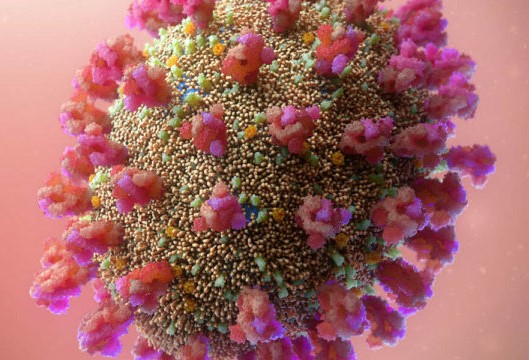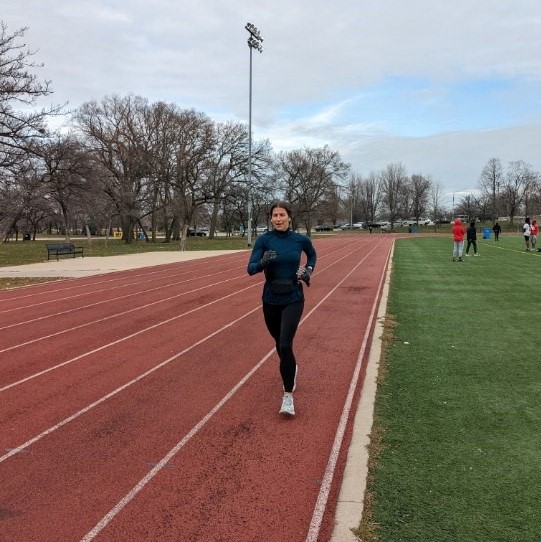Written By: Catherine Lewan, DPT, CYT
 My interest in Long COVID was piqued at the beginning of the pandemic when reports indicated dysautonomia as an underlying cause of the persistent symptoms that patients were reporting. In 2017, I was diagnosed with the most common form of dysautonomia, postural orthostatic tachycardia syndrome (POTS) after years of mysterious multi-system symptoms. Unfortunately, it is common to wait years or even decades for a POTS diagnosis due to poor understanding and screening among healthcare professionals. With increasing awareness of the role of autonomic dysfunction in post-COVID conditions, hopefully, dysautonomia will be identified sooner. Rehabilitation professionals can help identify dysautonomia and provide autonomic conditioning and breathing exercises that have been found to improve symptoms.
My interest in Long COVID was piqued at the beginning of the pandemic when reports indicated dysautonomia as an underlying cause of the persistent symptoms that patients were reporting. In 2017, I was diagnosed with the most common form of dysautonomia, postural orthostatic tachycardia syndrome (POTS) after years of mysterious multi-system symptoms. Unfortunately, it is common to wait years or even decades for a POTS diagnosis due to poor understanding and screening among healthcare professionals. With increasing awareness of the role of autonomic dysfunction in post-COVID conditions, hopefully, dysautonomia will be identified sooner. Rehabilitation professionals can help identify dysautonomia and provide autonomic conditioning and breathing exercises that have been found to improve symptoms.
Dysautonomia International is a reputable source for research and resources relating to autonomic dysfunction, including PACS:
COVID-19 has been identified as a trigger for post-viral dysautonomia/POTS, giving rise to the term “Long COVID POTS.” Long COVID POTS can co-exist with other multi-system issues that have been identified as phenotypes to guide treatment. These phenotypes are explored in the courses I’ve developed on Post-acute COVID-19 syndromes (PACS):
- Organ damage
- Post-intensive care unit syndrome (PICS)
- Dysautonomia/POTS
- Chronic fatigue syndrome/post-viral fatigue syndrome
As many of these cases will present with orthostatic and activity intolerance, therapists will need to titrate exercise and orthostatic challenge so as to avoid post-exertional malaise and symptom flares that limit participation in rehab efforts as well as activities of daily living. Familiarity with post-COVID pathophysiology can help therapists and other team members to create effective treatment plans despite:
- Autonomic dysfunction (aka dysautonomia/POTS) and orthostatic intolerance
- Hyperinflammatory responses, immune dysregulation, and mast cell activation syndrome (MCAS)
- Central sensitization and chronic pain
- Traumatic stress and post-traumatic stress disorder
- Post-exertional malaise
I’ve had to learn about these often-overlapping pathologies in order to manage my own symptoms, as well as care for my patients with complex chronic illnesses, including PACS. While my case had a gradual onset due to genetic vulnerability, I’ve benefited from some of the same treatments I use with my patients, including autonomic conditioning therapy (ACT). Early evidence suggests that ACT improves PACS symptoms and tolerance to upright activity and ambulation.
Autonomic conditioning is a progressive exercise program that gradually increases exertional and orthostatic challenges according to patient tolerance. If symptoms worsen with exercise, it is appropriate to take a step back, reassess pacing and increase active recovery strategies. In my own rehabilitation, this was a hard lesson to learn! As a former professional dancer, I’m used to pushing my limits, but doing so with POTS was unsustainable. If I progressed my training too quickly, my body would let me know with an increase in a variety of symptoms including nausea/vomiting, shortness of breath, migraines, dizziness, paresthesia, heat intolerance, and severe fatigue that signaled a need to slow down.

Dr. Catherine Lewan, PT, DPT at the finish line of the Charleston Half Marathon Jan 14th. People with POTS and Long COVID POTS struggle with upright tasks, but improved tolerance to upright activity is possible over time with a carefully graded exercise program.
When I was diagnosed, I was short of breath just walking (slowly), despite being a life-long regular exerciser. Six years later, I’m training for a half marathon and have learned how critical it is to pace and self-care. While there is no cure for dysautonomia/POTS or Long COVID, symptoms can improve with time and a persistent commitment to management. Therapists will be called upon to guide these patients through exercise, breathing strategies, pacing strategies, and hydration/dietary changes that can help manage symptoms.
Anecdotal evidence suggests that POTS cases triggered by a virus may see a quicker recovery than those of us with gradual-onset cases. Recovery time for our post-COVID cases will vary depending on many factors. They will need the support of knowledgeable therapists who are willing to be patient, learn as they go, and adjust rehab efforts accordingly.
My research on this topic revealed that many healthcare professionals are struggling personally with persistent symptoms post-COVID. If this is you, hang in there. I’m hopeful that increasing numbers will drive awareness, research, and treatment options. You don’t need to wait until we have all the answers to arm yourself with knowledge and increase confidence in your ability to restore function post-COVID, benefiting both you and your patients.
Register for my upcoming Summit Live CE Webinar, Treatment for Patients with Post/Long-COVID-19, on February 23rd to learn more! This course will review evolving research on long-COVID, as well as established data on similar chronic conditions and pertinent neuroimmune physiology.
Explore online continuing education courses from Catherine below:
Functional Pelvic Floor Training for Weakness, Pain, and Dysfunction in Men, Women, and Older Adults
Hypermobility Spectrum Disorders
Pelvic Floor Rehabilitation Update
Therapeutic Exercise Using Yoga and Pilates to Safely Challenge Older Adults
Visit summit-education.com for more information.
References:
Jiménez-Cohl, P., Earle, N., González, B.R., & Thieck, E.J. (2012). [Postural orthostatic tachycardia syndrome (POTS): report of 15 cases]. Revista medica de Chile, 140 2, 145-52.
Putrino, D., Tabacof L., Tosto-Mancuso J. et al. Autonomic conditioning therapy reduces fatigue and improves global impression of change in individuals with post-acute COVID-19 syndrome, 22 April 2021, PREPRINT (Version 1) available at Research Square [https://doi.org/10.21203/rs.3.rs-440909/v1]

Thank you for the explanatory insight into POTS. I have had these symptoms for years prior to being diagnosed with POTS and having Ehlers. HX of Epstein -Barr in my 20’s may have triggered all of my symptoms…as I have not had covid. I look forward to your webinars!